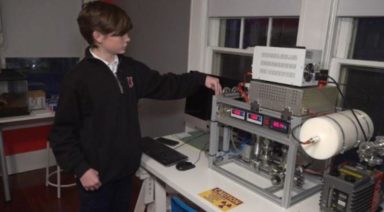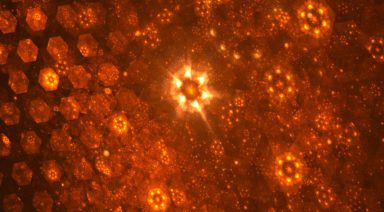Secret Space Programs and Breakaway Civilizations

In July 2014, on the 45th anniversary of Apollo 11’s moon landing, the government declassified information about a secret space program from the 1950s called Project Horizon. The plan outlined the building of a permanent military base on the moon. Ten to twenty men would be sent with all their supplies and nuclear weapons. The secret moon base would be used for surveillance against and protection from the Soviet Union, and the men would have constant communication with the Earth.
The released documents show that the scientists knew it wasn’t possible to implement the plan, but it was expected to be put in place as technology advanced. Project Horizon never got off the ground. But, that isn’t the end nor the beginning of the story about secret space programs from the past, present and the future.
Secret Space Programs and FDR
In the 1940s, according to recently released documents, President Franklin Delano Roosevelt commissioned a secret space program. He was concerned about how to move large numbers of people in case of nuclear war to avoid massive radiation damage. He thought there might also be a need to escape the ravages of some other global cataclysmic event. Since there was no place on Earth to which large masses of people could be moved, he considered the possibility of moving to locations in space.
At first, moving to the nearest star, Alpha Centauri, seemed like an option. However, the distance made such a plan impossible. As a next step, FDR focused on the moon, Mars or Venus as alternatives to Earth.
Beginning in 1945 at the conclusion of WWII, after President Truman took over, he brought 1,500 German scientists and engineers to the U.S. The scientists, under Hitler’s leadership in Nazi Germany, made advancements in the development of flying saucers, like the Nazi Bell, before and during the war. The German scientists worked at Fort Bliss, near El Paso, Texas, and were assigned the task of developing secret space programs under the project name of Operation Paperclip.
Truman believed the Germans had knowledge of anti-gravity propulsion engines and other spacecraft flight technology. Werner von Braun was the most well-known member of this group, who eventually became the designer of the Saturn V launch vehicle, which was used to propel American astronauts to the moon. He eventually became the director of NASA’s Marshall Space Flight Center and spoke out frequently about the need for space exploration.
Secret space programs are believed to be financed by secret “Black Budget” programs with contributions made by people with great wealth, private contractors and some government agencies. This secret funding keeps the programs from being subject to congressional oversight. Since the early 1960s, the programs have been kept secret even from the president: A memo was found in the newly released documents that said to keep “Lancer,” President Kennedy’s secret service nickname, out of the loop.
Secret Space Programs and Breakaway Civilizations
Secret space programs may have developed Breakaway Civilizations in outer space. Well-respected UFO and space researcher Richard Dolan, defines a Breakaway Civilization as a secret group of technologically advanced people who don’t share their knowledge with the rest of the world. These are essentially the Earth’s elite who have knowledge far above the rest of the world.
These elite may know of an upcoming imminent global geological cataclysm event and are building space bases as shelters for themselves. For example, they could be planning their escape from Nibiru Planet X, which “triggers comet showers” every 27 million years. One of those comets is expected to crash into the Earth and totally destroy it sometime in the not too distant future.
Scotland native, Gary McKinnon, hacked into thousands of government secret files. He found evidence of an anti-gravity propulsion system that traveled at incredible speeds. Also, he found evidence of portal technology that, when coupled with anti-gravity propulsion, would allow space travel to other stars and planets to be accomplished in a short amount of time.
It appears that Einstein’s theory that nothing can travel faster than the speed of light has been debunked. It also appears the Black Budget keeps these secrets even from NASA, since NASA apparently does not have access to anti-gravity technology. It still propels its rockets with fossil fuel.
McKinnon claims he saw nearly 300 photos of structures and civilizations existing on the back side of the moon. He says these structures (alien bases on the moon) are erased out of any photos when they are released to the public. Unfortunately, when he hacked into the computers, he was using a dial-up connection so he couldn’t download the photos. He says he took a screenshot of one that was saved on his computer, but his computer was seized when he was arrested. When his computer was subsequently returned to him, the photo was gone.
McKinnon also reported viewing a file that included names of “non-terrestrial officers” who he says were assigned to ships that weren’t U.S. Navy ships. He concluded these were the officers assigned to space ships, not navy ships, indicating that Breakaway Civilizations already exist.
There are many outstanding questions about secret space programs. Why do these programs remain secret? Will there be an opportunity for non-elite citizens to be part of a Breakaway Civilization? A poll taken in 2015 shows that 54 percent of Americans believe extraterrestrial intelligence exists. With such a large number of people supporting alien existence, why is there still a need to maintain secrecy?
Want more like this article?
Don’t miss Deep Space on Gaia for more on the long and hidden history of Earth’s secret space program.
Nemesis Star Theory; Does the Sun Have an Evil Twin?

Many people remain anxious about the threat posed from a hidden nemesis planet, known as Nibiru, that has been prophesied to collide with Earth. Though many of the proposed dates for this collision have come and gone, there is another celestial body that may be more likely to lead to an apocalyptic event: The Nemesis Star.
The Nemesis Star Theory
Binary star systems occur frequently and are actually more common than single stars. At least that’s what we thought, until a recent hypothesis proposed the possibility that every star starts out as a binary pair or multi-pair system. While the theory hasn’t been confirmed, there is significant evidence that our Sun likely has a twin, an evil twin.
The majority of stars in the galaxy are red dwarfs, which are a fifth of the size of the sun and up to 50 times fainter. These types of stars are pretty commonly paired with another star in a binary system, leading astronomers to believe that Nemesis would be the Sun’s red dwarf star companion. But due to the small size and faintness of these stars, they can be hard to find, making Nemesis all the more elusive.

binary stars courtesy wired.com
This star is thought to be responsible for 12 cyclical extinction events on Earth, including the one that killed the dinosaurs. The Nemesis Star Theory’s roots can be traced to two paleontologists, David Raup and Jack Sepkoski, who noticed that there was a periodicity to major die-outs throughout Earth’s history, occurring in 26 million year intervals. This led to a number of astrophysicists and astronomers, postulating their own Nemesis Star hypotheses.
So how would the sun’s twin be responsible for mass extinctions? The Nemesis Star Theory proposed the idea that the Earth’s binary twin must be in a large 1.5 light-year orbit, retaining just enough gravitational pull between it and the Sun so as not to drift off. But the issue with the orbit of Nemesis is the possibility that it occasionally passes through a cloud of icy debris on the fringe of our solar system, known as the Oort Cloud.
Don’t Perturb the Oort
The Oort Cloud is a theoretical sphere that is believed to orbit our solar system, consisting of planetesimals, the small icy building blocks of planets, comets, and asteroids. These planetesimals are sticky and collide with each other until they become large enough to have a significant gravitational pull, eventually becoming as large as a moon or a planet. They also create asteroids and comets which can be knocked out of orbit and sent hurtling toward the center of the solar system, crashing into planets.
There is a binary star system that once passed close enough to nearly perturb the Oort, and it was likely visible from Earth. Scholz’s Star made a flyby some 70,000 years ago, at a distance of 50,000 astronomical units (AU), with one AU being the distance from Earth to the Sun. The Oort is thought to extend from anywhere between 5,000 and 100,000 AUs and is believed to contain up to two trillion celestial objects. Astronomers are 95% certain that Shulz’s star passed within half of a light-year of us, possibly perturbing the Oort, though apparently not enough to cause a mass extinction event.
Comets are believed to exist within the Oort and are the product of a thief model, a give-and-take of celestial bodies between stars when they’re formed. In this process, comets get pulled back and forth between the gravitational field of stars. It was for this reason that the Oort was theorized, due to the number of comets coming from it, there had to have been a sibling star that pulled them out to the Oort.

The Oort courtesy of space-facts.com
Astronomers also found a dwarf planet in the Kuiper Belt, a region just before the Oort that also contains icy, celestial bodies. This planet, named Sedna, orbits the Sun in a long, drawn-out elliptical path and is one of potentially hundreds. Sedna may help to explain the Nemesis star theory, in that its far-flung orbit was likely caused by our Sun’s twin, pulling it out as it drifted off into the depths of space. Imagine if instead of 9 planets in our solar system, there were a few hundred?
So where is this Nemesis star? Several years ago, the E.U. launched the wonderfully named, Gaia satellite, to map out the stars in the Milky Way and look specifically at stars that have had a close encounter with our solar system or that might come close in the future. But whether or not Nemesis will be found is unknown; it’s possible that it could make a return for the next mass extinction, or it is possible that it drifted off, perturbing the Oort of another star.




































